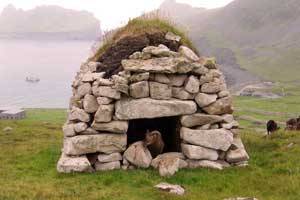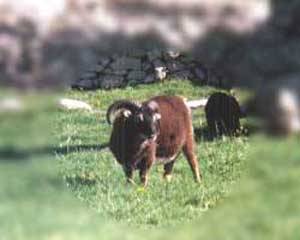

Soay sheep
 Soay
are unlike any other sheep, being the most primitive with very varied
characteristics plus a history that evokes a romanticism back to the
Bronze Age. They are similar to the mouflon seen wild in Corsica,
Sardinia and Cyprus. How did they arrive at the St. Kilda islands and
when? No one really knows. But what we do know is that when owners talk
of them they talk of intelligent, nimble animals with excellent
mothering habits, always with quirky behavioural traits and lots of fun
to watch. They are excellent conservation grazers, being content in
woodland and on hillsides. The coloured fleece is sought after for many
craft uses and their carcass produces lean meat of a delicious flavour
fetching premium prices for the gourmet trade.
Soay
are unlike any other sheep, being the most primitive with very varied
characteristics plus a history that evokes a romanticism back to the
Bronze Age. They are similar to the mouflon seen wild in Corsica,
Sardinia and Cyprus. How did they arrive at the St. Kilda islands and
when? No one really knows. But what we do know is that when owners talk
of them they talk of intelligent, nimble animals with excellent
mothering habits, always with quirky behavioural traits and lots of fun
to watch. They are excellent conservation grazers, being content in
woodland and on hillsides. The coloured fleece is sought after for many
craft uses and their carcass produces lean meat of a delicious flavour
fetching premium prices for the gourmet trade.
 Soay
sheep are fine-boned and late maturing, with prominent withers.
The tail is short and thin. The texture of their wool can vary,
from soft fine wool to more coarse hairy fibres (or "kemps"), and
mixtures in-between. The fleece is, normally, shed naturally.
Soay
sheep are fine-boned and late maturing, with prominent withers.
The tail is short and thin. The texture of their wool can vary,
from soft fine wool to more coarse hairy fibres (or "kemps"), and
mixtures in-between. The fleece is, normally, shed naturally.
Rams are two-horned and the horns are strong. Scurred rams have been observed on Hirta, and occur occasionally in sheep owners' flocks. Ewes are either two-horned, polled, or scurred.
Soay sheep are classified as "vulnerable" on the RBST survival watch list.
